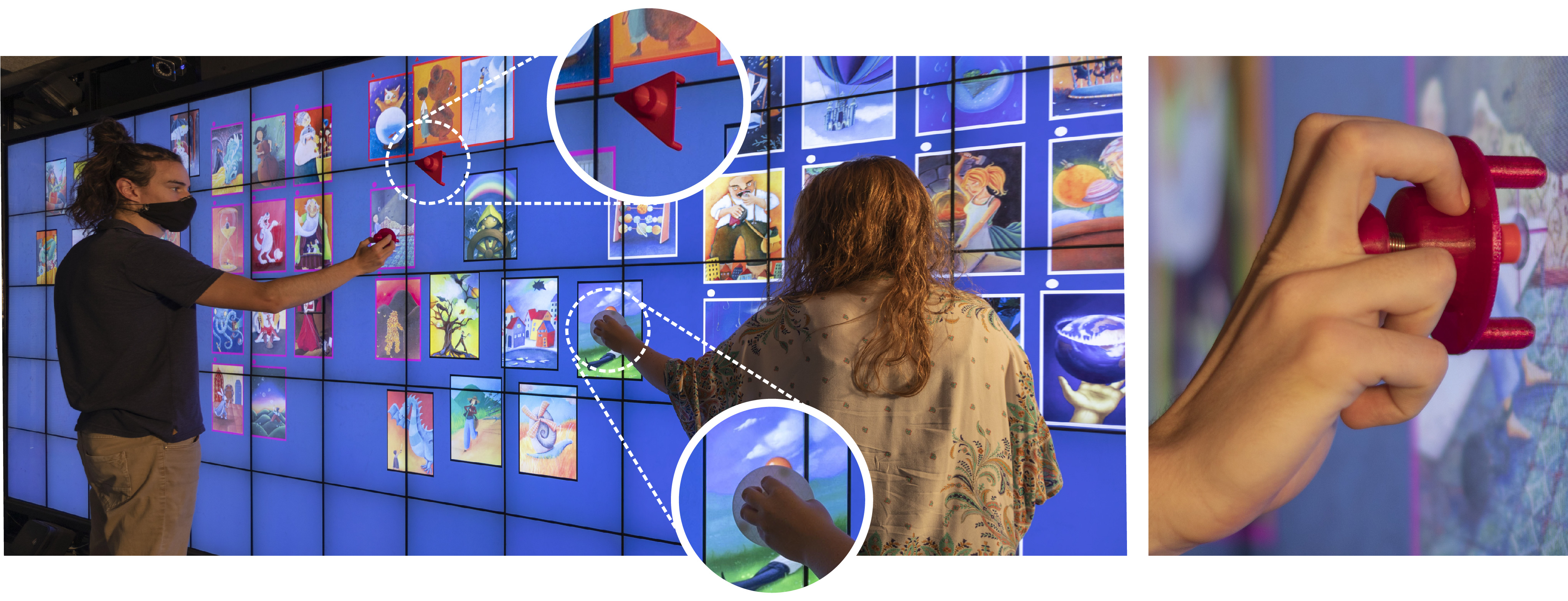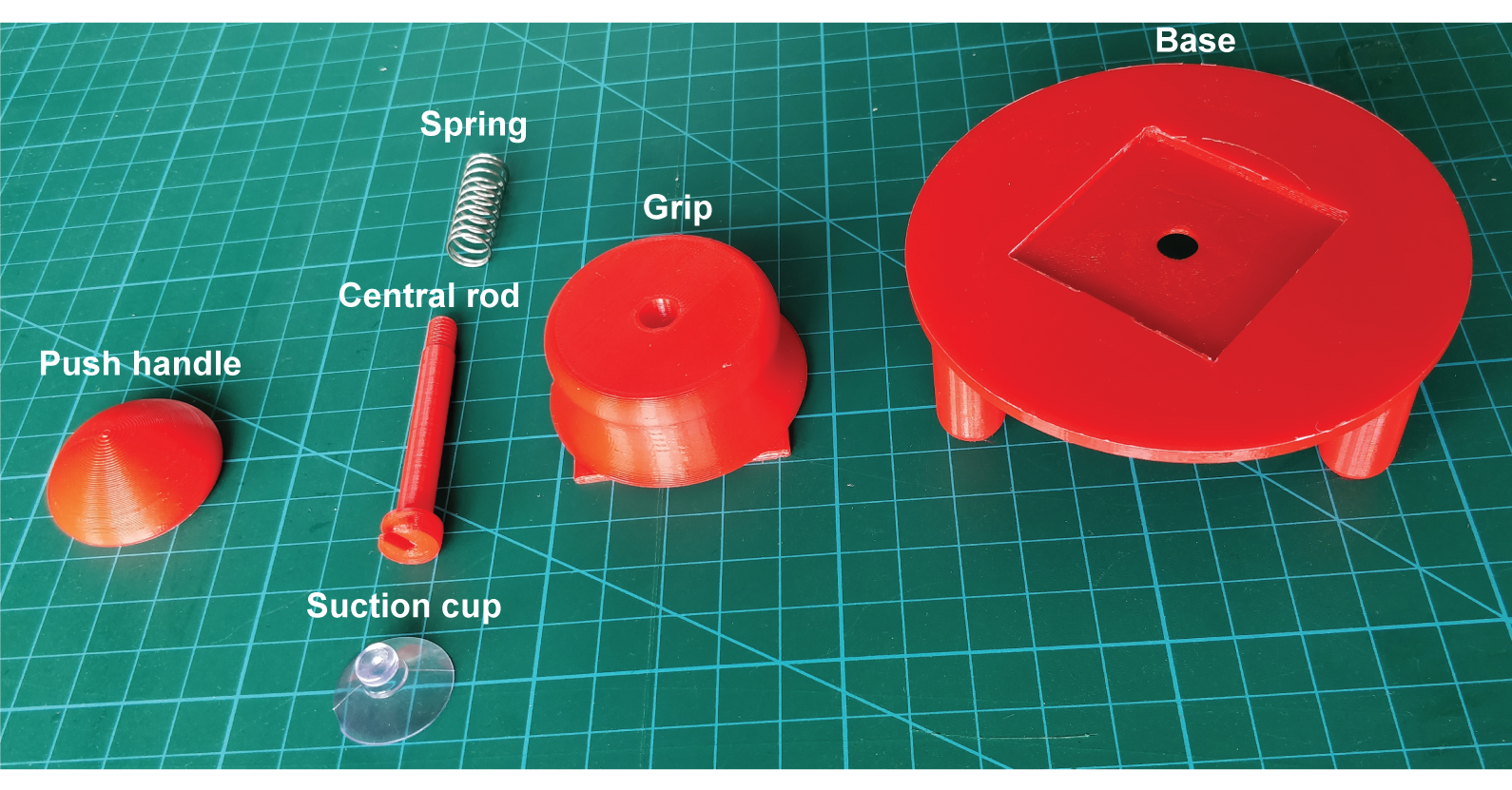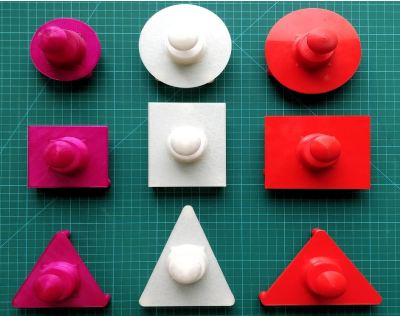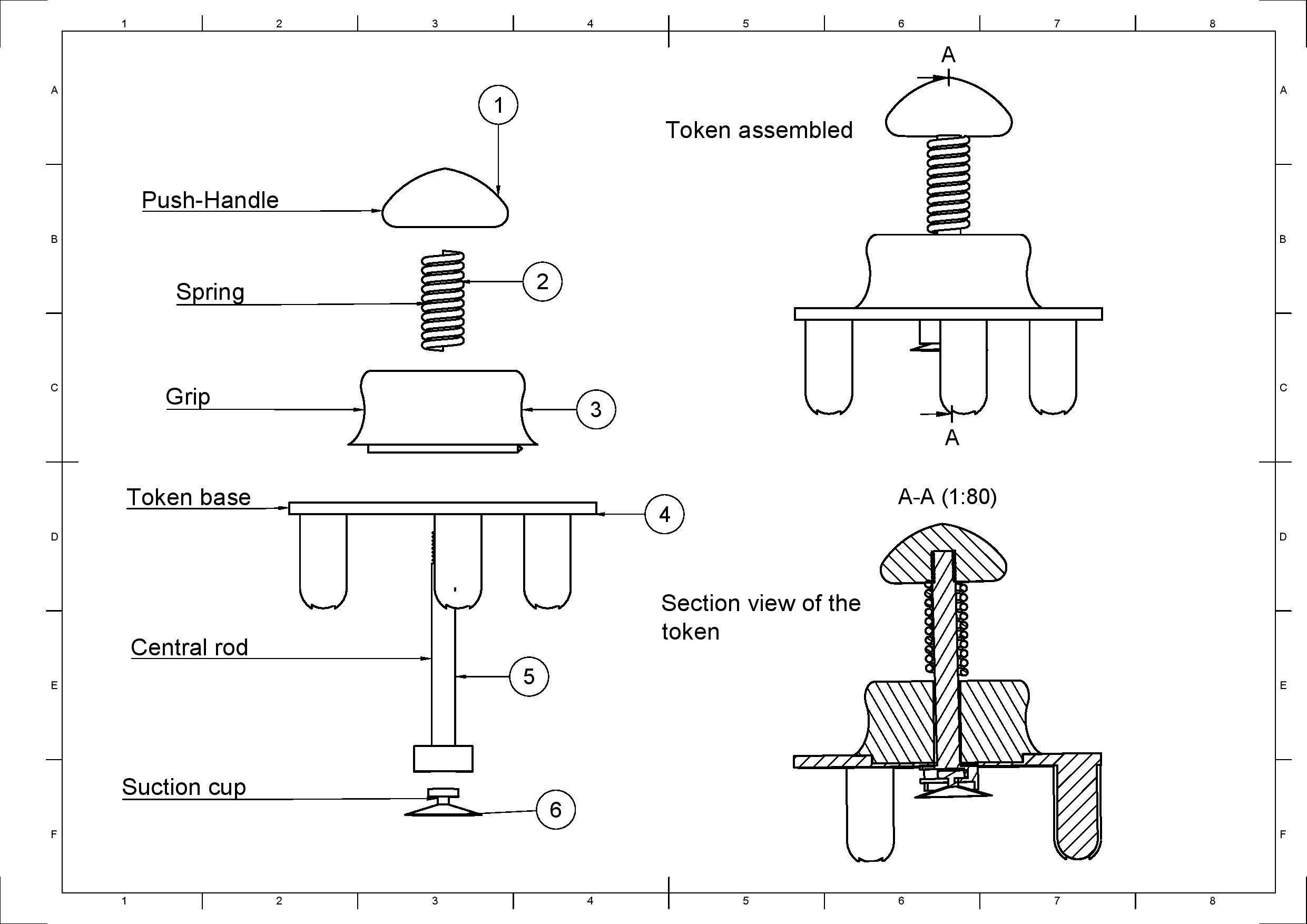Université Paris-Saclay, CNRS, Inria, LISN, Orsay, France
email: first.last@lisn.upsaclay.fr


Emmanuel Courtoux, Caroline Appert, and Olivier Chapuis. 2021. WallTokens: Surface Tangibles for Vertical Displays. In CHI Conference on Human Factors in Computing Systems (CHI ’21), May 8–13, 2021, Yokohama, Japan. ACM, 13 pages. https://doi.org/10.1145/3411764.3445404
A WallToken is made of separate parts that are then assembled together. The main structure consists of four 3D printed parts (push handle, central rod, grip, and base). The central rod is then augmented with a spring and a suction cup at assembly time.

STL files for fabricating individual 3D printed parts are available for download below. They were created using the Fusion 360 software, and tested with Ultimaker 3 or 3X 3D printers using PLA or Tough PLA filament and a 0.4mm printcore.

The suction cup is a standard 20-mm diameter one, which generates a suction force of approximately 130 newtons.
The spring has 10 coils and is made of steel (AISI 304L stainless steel). It is 25mm-long when free, and 7mm-long when compressed. Inner diameter is 0.7mms, and outer diameter is 0.9mms.
The schema below details how to assemble the different parts into a WallToken.


Source code (C#) of our framework that transforms TUIO events into high-level token events: WallTokens.zip.
Read the paper and the README for more details.
Java TUIO WallToken client library (to be used with the above package): TUIOWT.zip.
